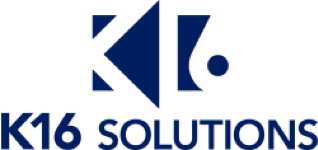The 3 Best Times to Archive LMS Student Data
Have you ever heard of good data hygiene? This term basically means that your institution’s student and course data are being managed properly, securely, and compliant with best practices.
Most universities are holding on to dozens of years of courses full of student data, and with hundreds or thousands of students attending each university, this data can start to pile up.
Where does it all go? Most universities will continue to stockpile it all in their LMS, and if a school migrated to a new LMS within the last several years, they likely also have historical data sitting on a legacy platform.
But, the LMS was never created to be a data repository. Its designed purpose was to improve learning, not hold onto mass amounts of data. As more and more courses pile up, universities can become vulnerable to student data privacy breaches.
More institutions are beginning to archive their student data to maintain better data hygiene to keep staff and students’ private data safe and secure. Is it time for your institution to start archiving student data? Let’s look at the three best times to consider this.
When should I archive student data?
1. When migrating to a new LMS
In the middle of an LMS migration project is one of the most convenient and beneficial times to archive student data. You’re already moving over hundreds or thousands of courses from your legacy LMS to your new system–why not implement an archiving strategy so that you can move off of your old LMS for good? This strategy allows you to cut substantial costs and provides an integrated solution for historical data so that you can easily access it whenever you need.
2. When you want your data to be secure
Upholding student data privacy laws is critical for the integrity and security of your institution. If you have years of courses and student data built up over time, it becomes difficult to know who has been accessing information. Allowing just one wrong person access to sensitive information can put the integrity of your entire institution at risk. Archiving courses transfers your sensitive information to a secure platform that only the right people can access.
3. When faculty have issues sorting and finding courses
If your faculty has to spend a great deal of time sorting and searching for their courses, it’s time to archive. You never want to let your LMS get so full that faculty can’t find what they’re looking for and end up getting frustrated because it’s such an inefficient process. Archiving is the equivalent to cleaning out and organizing a closet that has too much in it. Relevant courses stay live while historical courses and data are moved out of the way.
How can I archive courses and student data?
There are 3 main options for archiving courses and student data:
- Archive on your legacy LMS
- Cold storage
- Scaffold Archiving by K16 Solutions
When you use Scaffold Archiving, you ensure that course data is fully integrated with your current LMS. Additionally, you get complete content availability access, a more cost-effective price, and data retention to view, review, or export:
- Enrollment info,
- Submissions,
- Discussions,
- Replies,
- Attachments,
- Assignments,
- Quizzes,
- Feedback,
- Gradebooks,
- And more.
Now is the time to build an archiving strategy
Is your institution’s sensitive data at risk? We can archive student data to ensure that it’s secure, compliant, and organized. Speak with one of our archiving specialists to execute the best archiving strategy for your institution.


